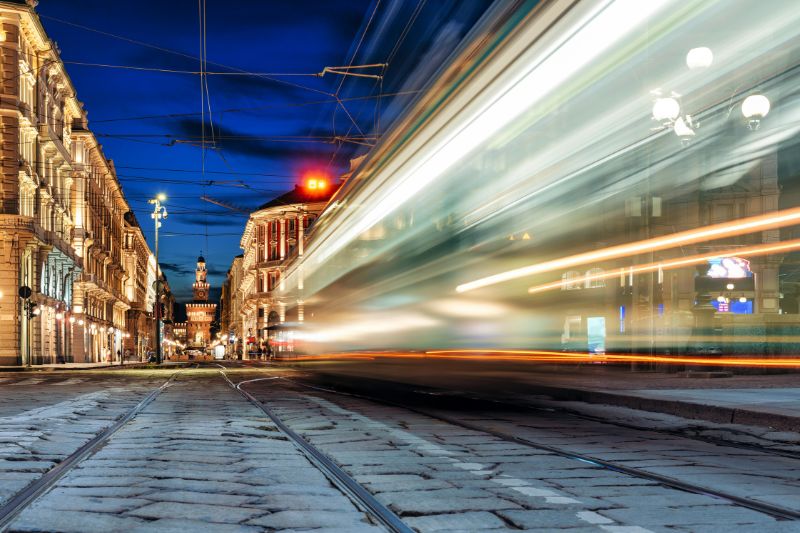Nestled between towering Alpine peaks and verdant valleys, South Tyrol represents one of Europe's most captivating cultural crossroads. This autonomous province in northern Italy offers visitors an extraordinary journey through majestic mountain landscapes where centuries-old traditions continue to flourish in intimate, traditional villages that seem untouched by time.
The region's unique position at the intersection of Germanic and Latin cultures has created a distinctive heritage that manifests in everything from architectural styles to culinary traditions. As we approach the 2026 Winter Olympics in Milano-Cortina, South Tyrol is poised to gain unprecedented international recognition, making this the perfect time to explore its hidden treasures.
The dramatic landscape of South Tyrol's mountains
South Tyrol's geographical setting is nothing short of extraordinary. The region encompasses parts of the Dolomites UNESCO World Heritage site, where jagged limestone peaks rise dramatically from emerald valleys. These mountains aren't merely scenic backdrops—they're living landscapes that have shaped the character and culture of the communities nestled within them. The Ortler Alps dominate the western horizon, whilst the iconic Dolomites stretch across the eastern territories. Between these mountain ranges, visitors discover a tapestry of valleys, each with its own microclimate and cultural identity. The Vinschgau Valley, for instance, boasts one of Europe's driest climates, creating perfect conditions for apple cultivation that has sustained local communities for generations.
.jpg)
Natural wonders of the South Tyrol region
The landscape's diversity extends far beyond its peaks. Ancient glaciers have carved out pristine lakes, whilst centuries of careful cultivation have created terraced vineyards that climb impossibly steep slopes. The Seiser Alm represents Europe's largest high-altitude Alpine meadow, offering visitors a glimpse of pastoral life that has remained largely unchanged for centuries.
These natural features aren't merely tourist attractions—they're integral to the region's cultural identity. Local farmers still practice traditional hay-making techniques on impossibly steep slopes, using methods passed down through generations.
Traditional villages where time stands still
South Tyrol's traditional villages represent living museums of Alpine culture. Five municipalities have earned recognition as Italy's most beautiful villages: Egna, Glorenza, Vipiteno, Castelrotto, and Chiusa. Each settlement tells a unique story of adaptation, resilience, and cultural preservation at the crossroads of multiple national identities and as many languages, whose tradition is reflected in every aspect of local life, from cuisine to art, from architecture to craftsmanship.
Architectural heritage that speaks volumes
The region's architectural landscape reflects its complex history. Gothic churches stand alongside buildings that are reminiscent of the Renaissance, whilst traditional farmhouses display distinctive features like overhanging roofs and decorative wooden balconies. In villages like Glorenza, medieval walls still encircle the historic centre, creating an atmosphere of timeless authenticity. These architectural elements aren't merely aesthetic choices—they represent centuries of practical adaptation to harsh mountain conditions. Traditional architectural forms in this region developed at a time when every aspect of organised living was dictated by the inflexible law of the mountain, with its precisely timed movements that turned into collective rituals. The steep roofs shed heavy snow loads, whilst the thick walls provide insulation against bitter winter temperatures. Every design element serves a purpose, reflecting the practical wisdom of generations.
.jpg)
Living traditions in daily life
What truly distinguishes South Tyrol's villages is how ancient traditions continue to permeate daily life. Local craftsmen still practice traditional woodcarving techniques, creating everything from furniture to religious sculptures. The Törggelen autumn tradition brings entire communities together for harvest celebrations that combine wine tasting with traditional folk music and dancing.
Religious processions mark the calendar year, with elaborate costumes and ceremonial objects that have been carefully preserved for centuries. The Sacred Heart fires, lit on mountainsides during June, create a spectacular display that connects modern communities with their ancestral heritage.
Cultural treasures hidden in the mountains
South Tyrol's cultural richness extends far beyond its picturesque facades. The region maintains three official languages—German, Italian, and Ladin—creating a linguistic diversity that enriches every aspect of local life and shapes multifaceted identities. This multilingual heritage influences everything from street signs to local governance, creating a unique cultural mosaic.
Culinary traditions that tell stories
The region's cuisine reflects its position at the crossroads of cultures. Traditional dishes like speck (smoked ham) and canederli (bread dumplings) showcase techniques developed to preserve food through harsh winters. Local restaurants, including 19 Michelin-starred establishments, elevate these traditional recipes whilst respecting their historical origins.
Mountain farms continue to produce artisanal cheeses using methods that haven't changed for centuries. The famous Graukäse (grey cheese) requires specific altitude conditions and traditional aging techniques that can only be found in these high-altitude settlements.
Arts and crafts that preserve heritage
Traditional crafts remain vital parts of village economies. Local artisans create everything from hand-woven textiles to intricate wood carvings, using techniques passed down through family generations. These aren't tourist souvenirs—they're functional objects that serve real purposes in daily mountain life.
The region's craft traditions have influenced global fashion and outdoor equipment design. Tyrolean-inspired knitwear and outdoor clothing reflect the practical wisdom of mountain communities, combining functionality with aesthetic appeal that has captured international attention.
The 2026 Winter Olympics: a golden opportunity
The upcoming Milano-Cortina 2026 Winter Olympics represents a watershed moment for South Tyrol. The region will host biathlon competitions in Rasun-Anterselva, bringing unprecedented international attention to this remarkable corner of the Alps. This global sporting spectacle will showcase South Tyrol's natural beauty and cultural heritage to billions of viewers worldwide. The Olympics will highlight not only the region's stunning landscapes but also its sophisticated infrastructure and commitment to sustainable tourism practices.
.jpg)
Brand opportunities in an Olympic spotlight
Forward-thinking brands recognise the extraordinary marketing potential that the 2026 Olympics present. This unique sporting event offers companies unprecedented opportunities to associate their brands with South Tyrol's values of authenticity, tradition, and natural beauty.
The Olympic spotlight will transform South Tyrol from a regional destination into a global brand. Companies that establish a presence in the region during this pivotal period will benefit from association with Olympic prestige and the region's growing international reputation.
Strategic timing for corporate events
The Olympic period offers brands exceptional opportunities to organise high-impact events and presentations in South Tyrol. The region's combination of world-class venues, stunning natural settings, and Olympic excitement creates perfect conditions for memorable corporate experiences.
From luxury mountain resorts to historic castles, South Tyrol offers unique venues that can accommodate everything from intimate executive retreats to large-scale product launches. The Olympic atmosphere will add excitement and international relevance to any corporate event.
Why South Tyrol matters now
South Tyrol represents more than a tourist destination—it's a living example of how traditional cultures can thrive in the modern world. The region's success in preserving its heritage whilst embracing sustainable development offers valuable lessons for communities worldwide.
The combination of stunning natural beauty, authentic cultural experiences, and growing international recognition makes South Tyrol an increasingly attractive destination for discerning travellers. The 2026 Winter Olympics will accelerate this transformation, establishing the region as a premier Alpine destination.
For businesses, the current moment represents a unique opportunity to connect with South Tyrol's emerging global profile. The region's commitment to quality, sustainability, and authentic experiences aligns perfectly with contemporary consumer values, creating powerful brand association opportunities.
As South Tyrol prepares for its Olympic moment, visitors can still experience the region's intimate charm and authentic traditions. The ancient villages continue their timeless rhythms, the mountains maintain their majestic presence, and the local communities preserve their cultural heritage with pride and dedication. This is more than a journey through beautiful landscapes—it's an encounter with a living culture that has thrived for centuries and continues to inspire all who experience it.



